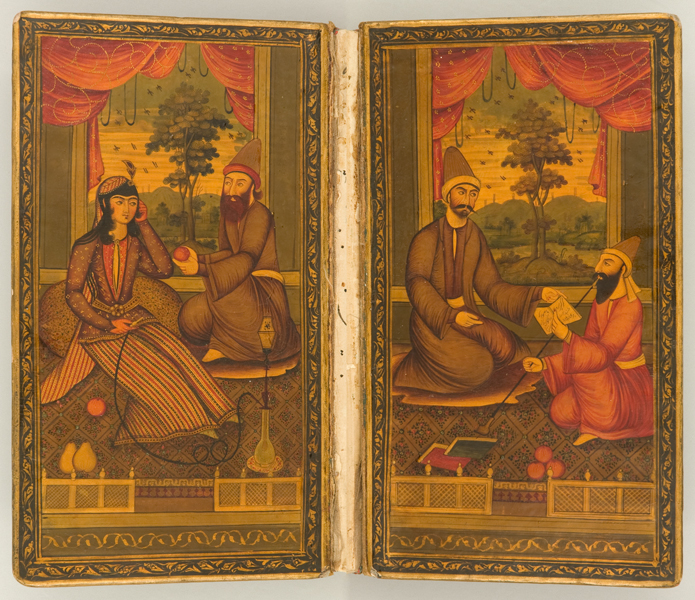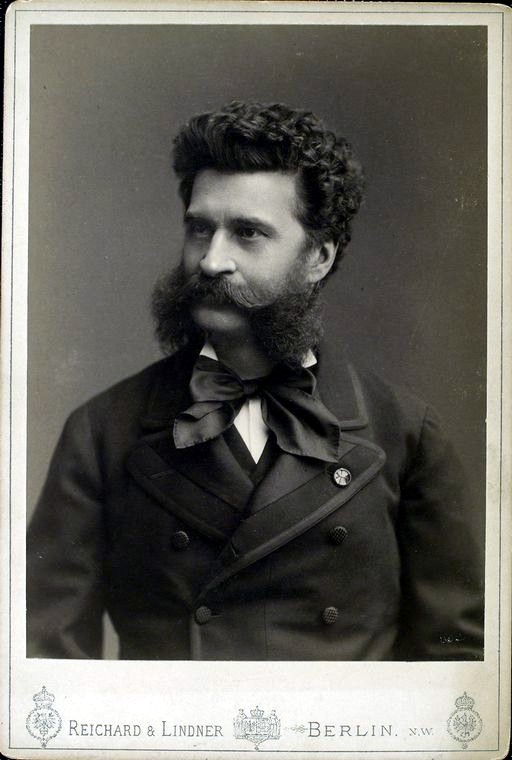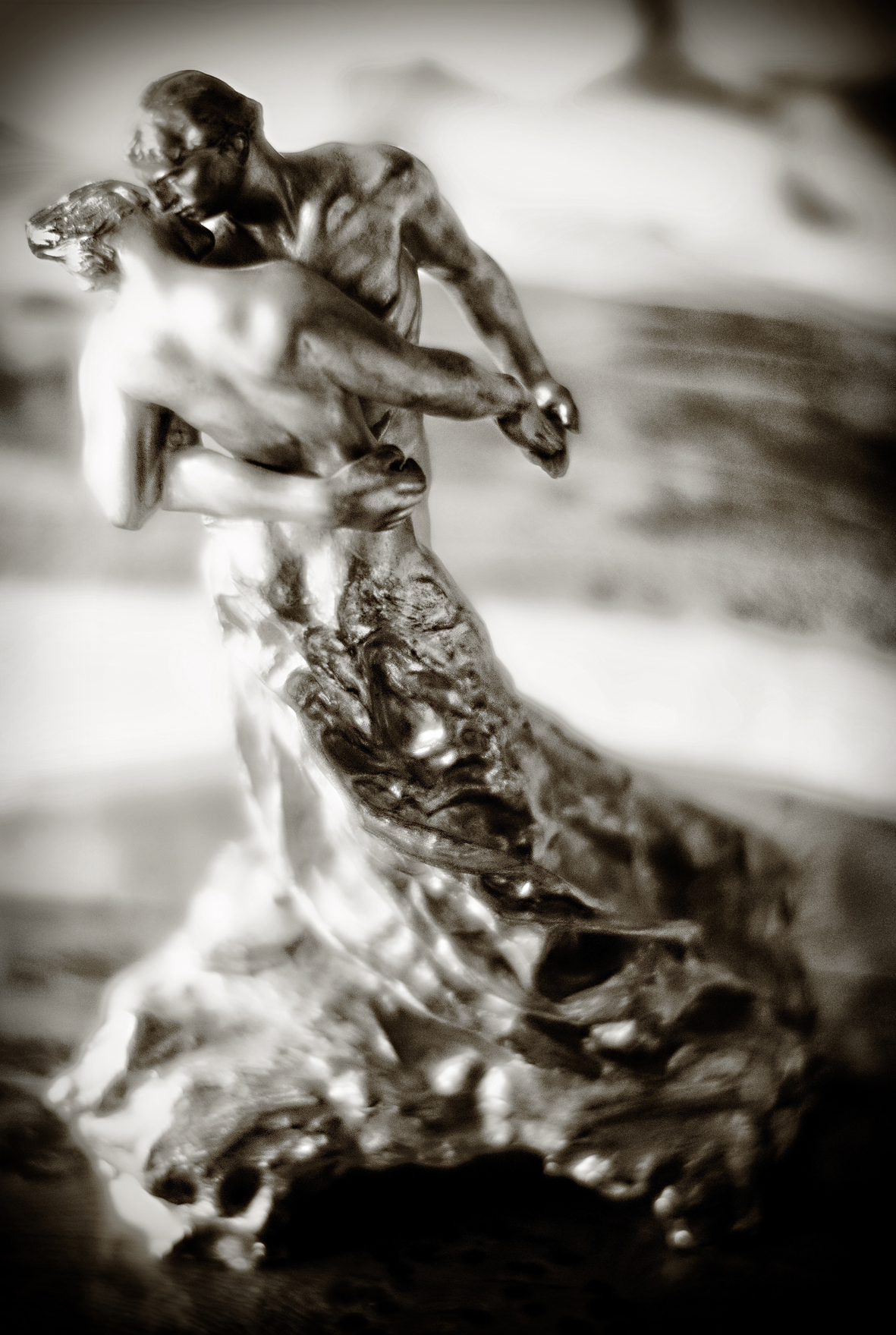|
Wine, Women And Song
"Wine, women, and song" is a hendiatris that endorses hedonistic lifestyles or behaviors. A more modern form of the idea is often expressed as " sex and drugs and rock 'n' roll", a phrase popularized by British singer Ian Dury in his song of the same title. Linguistic variations Similar tripartite mottoes have existed for a long time in many languages, for example: * * * * also more modern as * * also more modern as * ka, ღვინო, დუდუკი, ქალები, tr (wine, duduk, women) * * * * * * * * * Colombian Spanish: (Women, music and drink) Not all hendiatris including women are positive: in instead suggest three dangers rather than pleasures, and offers the three essentials of quite another culture. Roman inscriptions mention , such as the ambivalent: The following poem mentions similar ideas, using four concepts rather than three: * a popular ''Ghazal'' by Hafez (1325–1389): ::"Two sweethearts, ::Two flasks of old wine, ::A book of verse ... [...More Info...] [...Related Items...] OR: [Wikipedia] [Google] [Baidu] |
Hafez
(), known by his pen name Hafez ( or 'the keeper'; 1325–1390) or Hafiz, “Ḥāfeẓ” designates someoone who has learned the Qurʾān by heart" also known by his nickname Lisan al-Ghaib ('the tongue of the unseen'), was a Persian lyric poet whose collected works are regarded by many Iranians as one of the highest pinnacles of Persian literature. His works are often found in the homes of Persian speakers, who learn his poems by heart and use them as everyday proverbs and sayings. His life and poems have become the subjects of much analysis, commentary, and interpretation, influencing post-14th century Persian writing more than any other Persian author. Hafez is best known for his '' Divān'', a collection of his surviving poems probably compiled after his death. His works can be described as " antinomian" and with the medieval use of the term "theosophical"; the term "theosophy" in the 13th and 14th centuries was used to indicate mystical work by "authors only inspired ... [...More Info...] [...Related Items...] OR: [Wikipedia] [Google] [Baidu] |
Friedrich Von Amerling
Friedrich Ritter von Amerling (14 April 1803 – 14 January 1887) was an Austrian portrait painter in the court of Franz Joseph I of Austria, Franz Josef. He was born in Vienna and was court painter between 1835 and 1880. With Ferdinand Georg Waldmüller, he is one of the outstanding Austrians, Austrian portrait painters of the 19th century. Biography He was the son of the gold- and silversmith Franz Amerling and Theresia Kargl. He studied from 1815 to 1824 at the academy of the arts in Vienna, before journeying to Prague where he studied at the Academy until 1826. He spent 1827 and 1828 in London, where he was influenced by the portrait painter Thomas Lawrence (painter), Thomas Lawrence. Further journeys led him to Paris, where he studied with Horace Vernet, and Rome; he then returned to Vienna, where after 1828 he worked for the Austrian court, the aristocracy and middle class. He received the Reichel prize of the academy in Vienna in 1829. Amerling spent much time travelin ... [...More Info...] [...Related Items...] OR: [Wikipedia] [Google] [Baidu] |
German National Anthem
The "", officially titled "", is a German poem written by August Heinrich Hoffmann von Fallersleben . A popular song which was made for the cause of creating a unified German state, it was adopted in its entirety in 1922 by the Weimar Republic, replacing the de facto anthem " Heil dir im Siegerkranz". The first stanza of "Deutschlandlied" was used alongside the "Horst-Wessel-Lied" during the Nazi regime from 1933 until the end of World War II. On the proclamation of the German Federal Republic, the entirety of the song was still the official anthem, though only the 3rd verse was sung. Since 1991 and the subsequent Reunification of Germany, the third verse is the national anthem, though the 1st and 2nd verses are sometimes performed accidentally. Its phrase "" ('Unity and Justice and Freedom') is considered the unofficial national motto of Germany, and is inscribed on modern German Army belt buckles and the rims of some German coins. The music is derived from that of "Gott ... [...More Info...] [...Related Items...] OR: [Wikipedia] [Google] [Baidu] |
Das Lied Der Deutschen
The "", officially titled "", is a Germany, German poem written by August Heinrich Hoffmann von Fallersleben . A popular song which was made for the cause of creating a unified German state, it was adopted in its entirety in 1922 by the Weimar Republic, replacing the de facto anthem "Heil dir im Siegerkranz". The first stanza of "Deutschlandlied" was used alongside the "Horst-Wessel-Lied" during the Nazi Germany, Nazi regime from 1933 until the end of World War II. On the proclamation of the West Germany, German Federal Republic, the entirety of the song was still the official anthem, though only the 3rd verse was sung. Since 1991 and the subsequent Reunification of Germany, the third verse is the national anthem, though the 1st and 2nd verses are sometimes performed accidentally. Its phrase "" ('Unity and Justice and Freedom') is considered the unofficial national motto of Germany, and is inscribed on modern German Army belt buckles and the rims of some German coins. The m ... [...More Info...] [...Related Items...] OR: [Wikipedia] [Google] [Baidu] |
Johann Strauss II
Johann Baptist Strauss II (; ; 25 October 1825 – 3 June 1899), also known as Johann Strauss Jr., the Younger or the Son (), was an Austrian composer of light music, particularly dance music and operettas as well as a violinist. He composed over 500 waltzes, polkas, quadrilles, and other types of dance music, as well as several operettas and a ballet. In his lifetime, he was known as "The Waltz King", and was largely responsible for the popularity of the waltz in the 19th century. Some of Johann Strauss's most famous works include "The Blue Danube", " Kaiser-Walzer" (Emperor Waltz), "Tales from the Vienna Woods", " Frühlingsstimmen", and the "Tritsch-Tratsch-Polka". Among his operettas, ''Die Fledermaus'' and '' Der Zigeunerbaron'' are the best known. Strauss was the son of Johann Strauss I and his first wife Maria Anna Streim. Two younger brothers, Josef and Eduard Strauss, also became composers of light music, although they were never as well known as their brother. Spe ... [...More Info...] [...Related Items...] OR: [Wikipedia] [Google] [Baidu] |
Waltz
The waltz ( , meaning "to roll or revolve") is a ballroom dance, ballroom and folk dance, in triple (3/4 time, time), performed primarily in closed position. Along with the ländler and allemande, the waltz was sometimes referred to by the generic term German Dance in publications during the late 18th and early 19th centuries. History There are many references to a sliding or gliding dance, including ''volte'', that would evolve into the waltz that date from 16th-century Europe, including the representations of the Printmaking, printmaker Sebald Beham, Hans Sebald Beham. The French philosopher Michel de Montaigne wrote of a dance he saw in 1580 in Augsburg, where the dancers held each other so closely that their faces touched. Kunz Haas (of approximately the same period) wrote, "Now they are dancing the godless ''Weller'' or ''Spinner''."Nettl, Paul. "Birth of the Waltz." In ''Dance Index'' vol 5, no. 9. 1946 New York: Dance Index-Ballet Caravan, Inc. pages 208, 211 "The ... [...More Info...] [...Related Items...] OR: [Wikipedia] [Google] [Baidu] |
Johann Heinrich Voss
Johann Heinrich Voss (German: Voß, ; 20 February 1751 – 29 March 1826) was a German classicist and poet, known mostly for his translation of Homer's ''Odyssey'' (1781) and ''Iliad'' (1793) into German. Life Voss was born at Sommersdorf in Mecklenburg-Strelitz as the son of a farmer. After attending the Gymnasium at Neubrandenburg from 1766 to 1769, he was obliged to accept a private tutorship in order to earn money to enable him to study at a university. At the invitation of Heinrich Christian Boie, whose attention he had attracted by poems contributed to the ''Göttinger Musenalmanach'', he went to the University of Göttingen in 1772. Here he studied philology, his studies encompassing both classical and modern languages, and became one of the leading spirits in the Göttinger Hainbund. In 1775 Boie made over to him the editorship of the ''Musenalmanach'', which he continued to issue for several years. He married Boie's sister Ernestine in 1777. In 1778 Voss was appoint ... [...More Info...] [...Related Items...] OR: [Wikipedia] [Google] [Baidu] |
Bartlett's Familiar Quotations
''Bartlett's Familiar Quotations'', often simply called ''Bartlett's'', is an American reference work that is the longest-lived and most widely distributed collection of quotations. The book was first issued in 1855 and is currently in its 19th edition, published in 2022. The book arranges its entries by author, rather than by subject, unlike many other quotation collections, and enters the authors chronologically by date of birth rather than alphabetically. Within years, authors are arranged alphabetically and quotations are arranged chronologically within each author's entry, followed by attributed remarks whose source in the author's writings has not been confirmed. The book contains a thorough keyword index and details the source of each quotation. History 19th century John Bartlett, an American publisher and writer, who ran the University Book Store in Cambridge, Massachusetts, was frequently asked for information on quotations. Bartlett began a commonplace book, includin ... [...More Info...] [...Related Items...] OR: [Wikipedia] [Google] [Baidu] |
Philip Schaff
Philip Schaff (January 1, 1819 – October 20, 1893) was a Swiss-born, German-educated Protestant theologian and ecclesiastical historian, who spent most of his adult life living and teaching in the United States. Life and career Schaff was born in Chur, Switzerland, and educated at the gymnasium of Stuttgart. His father died when he was young and he was sent to an orphanage. At the universities of Tübingen, Halle and Berlin, he was successively influenced by Ferdinand Christian Baur and Schmid, by Friedrich August Tholuck and Julius Müller, by David Strauss and, above all, Johann August Wilhelm Neander. At Berlin in 1841 he took the degree of Bachelor of Divinity and passed examinations for a professorship. He then traveled through Italy and Sicily as tutor to Baron Krischer. In 1842, he was '' Privatdozent'' in the University of Berlin, where he lectured on exegesis and ecclesiastical history. In 1843, he was called to become Professor of Church History and Bibli ... [...More Info...] [...Related Items...] OR: [Wikipedia] [Google] [Baidu] |
German Language
German (, ) is a West Germanic language in the Indo-European language family, mainly spoken in Western Europe, Western and Central Europe. It is the majority and Official language, official (or co-official) language in Germany, Austria, Switzerland, and Liechtenstein. It is also an official language of Luxembourg, German-speaking Community of Belgium, Belgium and the Italian autonomous province of South Tyrol, as well as a recognized national language in Namibia. There are also notable German-speaking communities in other parts of Europe, including: Poland (Upper Silesia), the Czech Republic (North Bohemia), Denmark (South Jutland County, North Schleswig), Slovakia (Krahule), Germans of Romania, Romania, Hungary (Sopron), and France (European Collectivity of Alsace, Alsace). Overseas, sizeable communities of German-speakers are found in the Americas. German is one of the global language system, major languages of the world, with nearly 80 million native speakers and over 130 mi ... [...More Info...] [...Related Items...] OR: [Wikipedia] [Google] [Baidu] |



